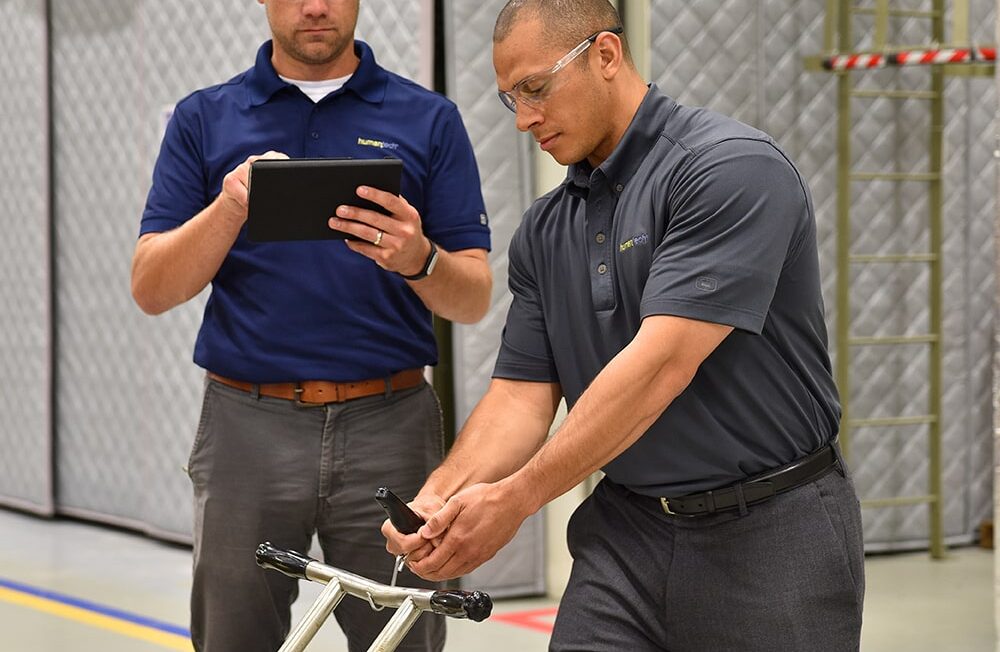The term musculoskeletal disorder (MSD) is widely accepted in the world of ergonomics to indicate damage associated with conditions that ergonomics guidelines seek to prevent. But what is a musculoskeletal disorder, and how does it occur? In a study by Barbe et al., the extent of the MSD development process in muscles, tendons, bones, ligaments and nerves is examined.
MSDs arise from many physical demands placed on muscles and nerves adding up over time. Time is an important factor because it is what happens “under the hood,” as these physical stressors build up, that contributes to the progression of MSDs.
While working out, we stress our muscles and nerves with the intention of recovering, which allows for changes to occur in many parts of our bodies. If there isn’t enough time to recover before stressing our bodies again, tissues that were damaged don’t have time to repair, and the initial damage progresses further. Replace working out with working in this scenario; the progression of a musculoskeletal disorder begins to occur in a similar way. The difference is that ongoing stress to tissues without adequate recovery causes continuous inflammation over many years and can lead to permanent changes in the affected muscles, tendons, bones, ligaments, and nerves.
Inflammation is the body’s response to damaged tissues; it is meant as a temporary tool to protect the damaged area while both removing unusable tissue and repairing salvageable tissue. Chemicals released by the damaged tissue initiate the process, and white blood cells from our immune system are recruited to help with the work. As a musculoskeletal disorder progresses, the inflammation remains and our white blood cells “eat up” everything in the involved area, including healthy tissues, which causes further damage and the inability to repair. This leads to breakdown and scarring of the damaged areas, which can permanently disable the involved structures by weakening them.
So how is this relevant to the workplace? Stressors in the workplace that appear to be less difficult than typical activities of daily living have the potential to become insidious. For example, lifting a box—which seems no more difficult than lifting a basket of laundry—intermittently with plenty of recovery time, causes us to become stronger, and MSDs do not arise. Lifting that same box repeatedly with no recovery time over many years, however, exposes us to the primary risk factors that cause MSDs, with high-force tasks escalating MSD risk the most, and repetition adding to the risk when combined with the high forces.
These patterns of interaction underlie the development of many disorders, some of which include carpal tunnel syndrome, tendonitis, epicondylitis, hand pain, and lower back disorders. By using the right tools to help us recognize when these workplace stressors are present, and by removing them early on, we can prevent MSDs before they begin.
References
Barbe et al: The interaction of force and repetition on musculoskeletal and neural tissue responses and sensorimotor behavior in a rat model of work-related musculoskeletal disorders. BMC Musculoskeletal Disorders 2013 14:303. http://www.biomedcentral.com/1471-2474/14/303.
